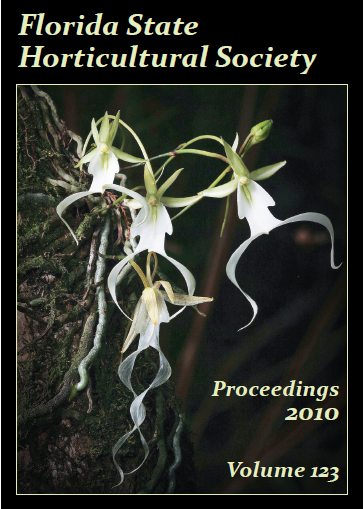Abstract
‘Sugar Belle’tm mandarin (previously known as LB8-9) was released to Florida citrus growers in 2009. Fruit were evaluated during the 2008–09 and 2009–10 seasons in terms of growing location and response to different postharvest coatings and storage temperatures to further refine their optimum postharvest handling practices. Fruit were obtained from blocks in Orange or Indian River (IR) Counties, washed and coated with either shellac or carnauba wax, and then stored at 1, 4, or 10 °C for up to 39 d and then transferred to ambient temperatures for an additional 7 d. In general, fruit from the Orange County block developed less postharvest decay and peel breakdown than fruit from the IR County block. Uncoated fruit or fruit stored at warmer temperatures developed better external color during storage. Use of coatings, especially carnauba, or storage at cooler temperatures inhibited fruit water loss most. Except for fruit from the IR block during the first season, the development of decay and physiological disorders during storage and subsequent transfer to ambient conditions was inhibited significantly more if stored at 1 or 4 °C than at 10 °C. Fruit from the IR block developed what appeared to be chilling injury (CI) when stored at 1 or 4 °C during the first season only. It is not clear if this different response is due to growing location, age of the block, or some other unknown factor. When CI developed, coating the fruit with either shellac or carnauba wax reduced the development of the symptoms. ‘Sugar Belle’ mandarins were also found to have a positive, exponential relationship between fruit size and internal seed content.

